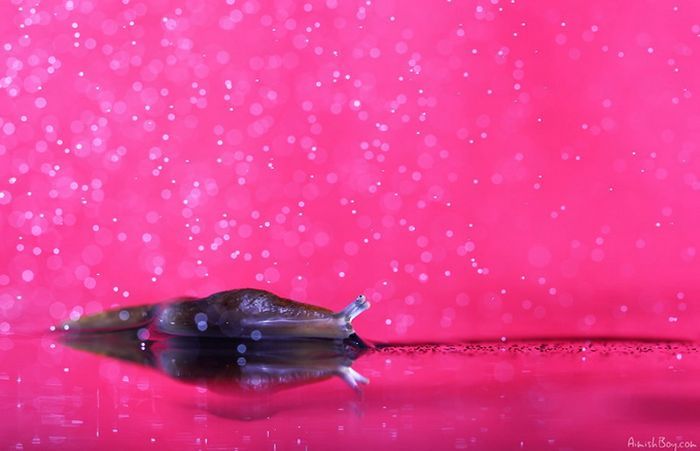|
|
Animal Macro Photography
|
• Extending the distance between the lens and the film or sensor by inserting either extension tubes or a continuously adjustable bellows, with no optical components; between the camera body and the lens. The further the lens is from the film or sensor, the closer the focusing distance, the greater the magnification, and the darker the image for the same aperture. Tubes of various lengths can be stacked, decreasing lens-to-subject distance and increasing magnification. Bellows or tubes must be removed for normal working at longer distances. They can be used in conjunction with some other techniques (e.g., reversing the lens).
• Placing an auxiliary close-up lens in front of the camera's taking lens. Inexpensive screw-in or slip-on attachments provide close focusing at very low cost. The quality is variable, with some two-element versions being excellent while many inexpensive single element lenses exhibit chromatic aberration and reduced sharpness of the resulting image. This method works with cameras that have fixed lenses, and is commonly used with bridge cameras. These lenses add diopters to the optical power of the lens, decreasing the minimum focusing distance, and allowing the camera to get closer to the subject.
• Employing the Scheimpflug principle to change the plane of focus at the image plane relative to the subject plane, thereby increasing effect depth-of-field for a given lens aperture. Requires use of a specialized lens that allows the optical section to be pivoted off center. Examples are TS lenses from Nikon, Canon, and other manufacturers, and products like the LensBaby and Zoerk Multi Focus System. Traditional view cameras with bellows systems and / or tilting backs also permit plane-of-focus adjustment. Because of the very narrow depth-of-field available in macro photography, and the consequent need to stop down the lens as far as possible to obtain adequate depth-of-field, employing the Scheimpflug effect allows both increased depth-of-field and the ability to make more use of existing lighting conditions. The ability to work at a relatively larger aperture and control depth-of-field, is one potential benefit of this equipment and technique.
• Attaching a telephoto extender between the camera body and the lens. A 1.4× or 2× teleconverter gives a larger image, adding macro capabilities. As with an extension tube, less light will reach the film or sensor, and a longer exposure time will be needed. However, working distance remains the same as without the teleconverter.
|
|









